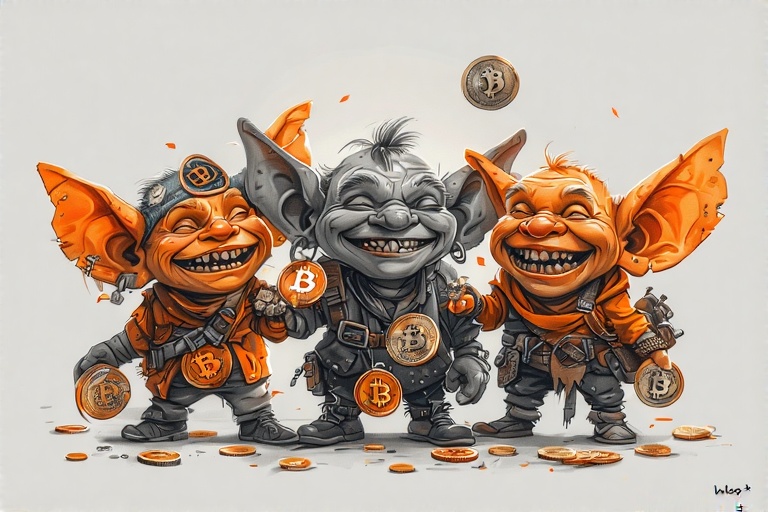Chainlink’s LINK token has emerged as the leading decentralized oracle asset, underpinning thousands of smart contract applications. As of mid-July 2025, LINK trades around $24.80, with a market capitalization near $11.2 billion and daily volume averaging $850 million. After a volatile first half of the year driven by macro shifts and network upgrades, LINK appears to be forming a new base, positioning itself for a decisive move in the months ahead.
Price Action and Market Sentiment
LINK rallied from a low of $21.50 in May to test $27.00 resistance in early July. Since then it has consolidated in a $23.80–$26.20 range. The Fear & Greed Index for LINK stands at 48, indicating neutral sentiment. On-chain whale accumulation has increased, while retail interest has stabilized, suggesting a balanced demand profile ahead of the next catalyst.
Technical Analysis Snapshot
- Support Zone – $23.50 to $23.80, where the 20-day exponential moving average aligns with recent lows.
- Resistance Levels – $26.20 and $28.00, defined by the upper Bollinger Band and Fibonacci pivot points.
- RSI – 52 on the daily chart, pointing to neutral momentum with slight upward bias.
- MACD – Histogram bars turning positive on the 4-hour timeframe, hinting at building bullish pressure.
- Chart Pattern – A descending channel over the past month, with price now testing the upper boundary.
Let me show you some examples of trader setups. Swing traders often buy near the lower channel line around $24.00, targeting the mid-channel near $25.80. Breakout speculators wait for a clear close above $26.20 on above-average volume to enter momentum-based positions.
Fundamental Drivers
Chainlink’s value stems from its oracle network, which securely delivers off-chain data to blockchains. Key developments shaping LINK’s outlook include:
- Cross-Chain Interoperability Protocol (CCIP) – A pilot launched in June 2025 allows developers to route data and assets between Ethereum, BNB Chain and Avalanche, expanding LINK utility.
- Staking Upgrade – v0.2 staking is in testnet, promising higher yields and slashing mechanisms to penalize malicious oracles.
- Decentralized VRF Usage – Verifiable Random Function calls surged to 350,000 requests in July, up 40 percent compared to April, driven by gaming and NFT launches.
- Partnerships – New data feed agreements with major DeFi protocols and enterprise platforms have increased the number of unique data streams to over 2,300.
These advancements enhance network security, broaden use cases and strengthen LINK’s long-term demand outlook.
On-Chain Metrics and Network Health
Chainlink’s on-chain statistics provide insight into adoption trends and oracle performance:
- Node Count – 5,400 active oracle nodes, a 12 percent rise over the last quarter, ensuring data redundancy and decentralization.
- Data Feeds – 2,350 distinct price and external data streams, used by DeFi protocols, insurance dApps and cross-chain bridges.
- Request Volume – ~3.2 million data requests per day, up from 2.5 million in April.
- Staked LINK – Over 150 million LINK locked in staking pools, representing roughly 12 percent of circulating supply.
Tracking these metrics on the Chainlink Explorer helps anticipate load-driven fee increases and potential congestion points that could influence short-term price moves.
Market Sentiment and Institutional Flows
Institutional interest in oracles has grown alongside decentralized finance. Recent highlights include:
- ETF Filings – Two spot LINK ETF proposals submitted in the U.S., awaiting regulatory feedback.
- Grayscale Exposure – LINK was added to Grayscale’s Smart Contract Builders Fund, boosting visibility among institutional allocators.
- Strategic Reserves – Analytics show a 5 percent increase in LINK held by wallets containing over one million tokens, signaling long-term holding by whales.
Sentiment on social trading platforms remains cautiously optimistic, with bullish sentiment slightly outpacing bearish views by a 1.2:1 ratio.
Scenario Analysis: Q3–Q4 2025
| Scenario | Target Range | Probability |
|---|---|---|
| Bullish Breakout | $26.50 – $30.00 | 35 percent |
| Range Continuation | $23.50 – $26.20 | 50 percent |
| Bearish Pullback | $21.00 – $23.00 | 15 percent |
A sustained close above $26.20 with volume above $1 billion would favor the bullish case. Failure to hold $23.50 could see a test of $21.00, a level last tested in April 2025.
Trading Strategies and Risk Management
- Entry Tactics – Accumulate at support near $23.80 or on a retest of the 20-day EMA, using limit orders to optimize fills.
- Stop-Loss – Position below $23.50 to limit downside if the range breaks.
- Position Sizing – Allocate no more than 2 percent of capital per trade to manage volatility.
- On-Chain Alerts – Set notifications for spikes in data request volume or node on-boarding via Chainlink Explorer to anticipate price catalysts.
Let me show you some examples of on-chain monitoring
Use the Chainlink Explorer’s “Top Data Consumers” chart to see which smart contracts are driving request volume. A sudden increase in calls from a new DeFi protocol often precedes a price uptick in LINK as oracle fees rise. Similarly, track the “Staked LINK” widget to spot surges in protocol staking, which can tighten circulating supply.
Let’s sum it up
LINK’s current consolidation reflects a network absorbing significant upgrades and growing institutional interest. With major milestones—such as CCIP rollout and v0.2 staking—on the horizon, the token is poised for a potential breakout if technical resistance is cleared. Traders should combine chart setups with on-chain metrics to refine entries and manage risk, while long-term allocators can accumulate near support in anticipation of a broader adoption wave.







Add a Comment